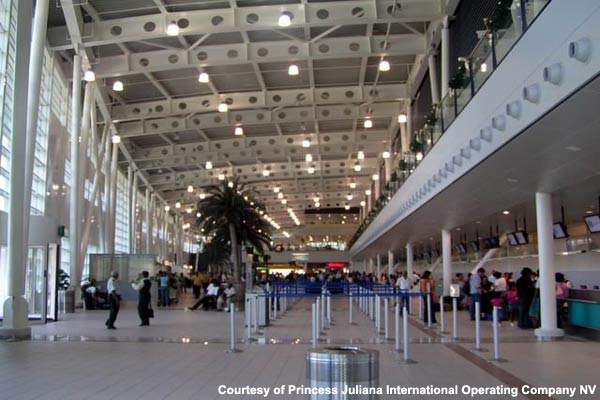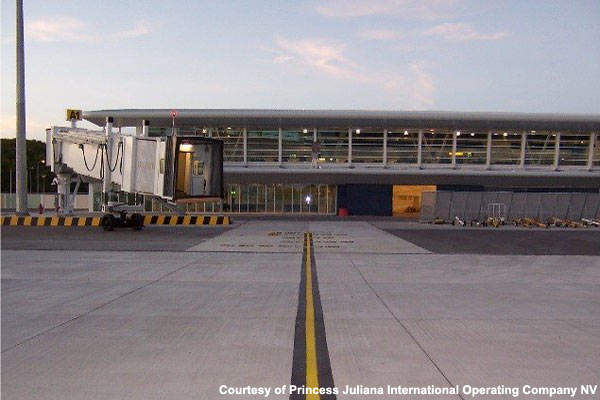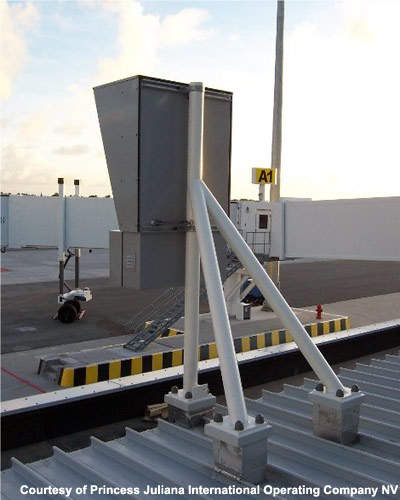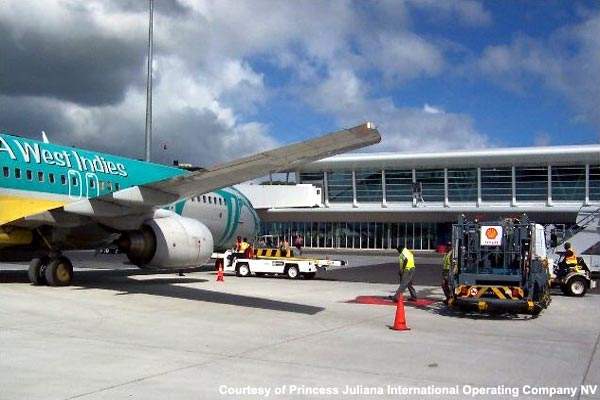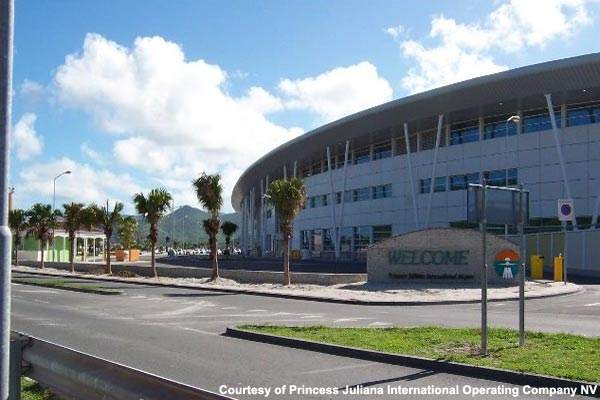Princess Juliana International Airport (PJIA) is on the Dutch sector of the Island of St Martin (Philipsburg) in the Caribbean – the island is divided between Dutch and French sovereignty.
The airport is widely recognised as a hub in the area for St Martin and neighbouring islands (Leeward Islands, including Anguilla, Saba, St Barthélemy and St Eustatius) and is the second busiest in the region after Luis Munoz airport in San Juan, Puerto Rico.
The airport handled around 1.85 million passengers in 2007 (the original terminal only had a capacity of 1.2 million passengers a year).
There is a single runway at the airport 09/27, which is famous for being short (2,180m, 7,152ft) and is only just long enough for heavy jets to land. The largest planes approaching the island fly extremely low and pass only 10m to 20m (30ft to 60ft) over the main beach (Maho).
The airport is operated by Princess Juliana International Operating Company NV under a 20-year concession awarded in 1997. The operator is owned by PJIA Holding NV, which is itself owned by the Island Government of the Island Territory of St Maarten. The International Air Transport Association (IATA) predicts that international demand for travel to the Caribbean will grow at an annual rate of 4.3% over the next ten years.
PRINCESS JULIANA MASTER PLAN
A master plan was started in 1997 that required that the airport be developed in three phases to accommodate new traffic and improve facilities. Consultants for financing (debt and bonds) and overseeing the instigation of the project involved Standard International Group, PricewaterhouseCoopers LLP and Berger Group – investment for the entire project will total $117m.
The first phase began in 1997 and involved a general refurbishment of the existing terminal and remedial work at the airport and this lasted until 2001. In 2004 phase II of the master plan came into action with 98,000m² of land being reclaimed in the Simpson Bay Lagoon.
The additional land was required for the construction of the new terminal building, a new air traffic control tower and radar facility (which came into operation in March 2004 and is under the control of the Department of Civil Aviation of the Netherlands Antilles (DCANA) there are 90,000 aircraft movements a year to monitor), a new parking structure and the construction of runway extension safety areas of 150m at each end and also new access roads. Phase II was completed in 2006 with the opening of the new terminal.
Phase III is due to begin in 2012 and will depend upon the passenger traffic at the airport. This final phase will include an extension of the new terminal building and the construction of a full parallel taxiway system. This project will require the reclamation of a further 227,000m² of land from the Simpsons Bay Lagoon. There will also be a relocation of airport maintenance, fire station and the weather station.
PHASE II TERMINAL
The new $80m terminal, which was opened in late 2006, has a design capacity of 2.5 million and was built on a reclaimed site to the northwest of the old terminal. The terminal building has 27,000m² of floor space across two storeys. The check-in (46 desks) and baggage reclaim is located on the ground floor and the departure lounge and retail areas are located on the first floor.
The terminal has four jet bridges for easy access from the gate area (11 boarding gates) to departing aircraft. The security area has state-of-the-art explosive screening systems for baggage checks. The airport has 39 outlets including 27 retail shops and 12 restaurant and cafe concessions. The terminal also required the construction of 72,500m² of apron space, enough to park nine wide-bodied aircraft.
PJIA CONTRACTORS
NACO provided design and engineering services for the construction of the new terminal building as well as the rerouting of the airport roads to encompass the new facility. The construction of the terminal building was supervised by Koop Holding Europe (main contractor). Sita provided Common-Use Terminal Equipment (CUTE) for the new terminal.
The boarding gates were constructed by Thyssen Construction and the Safegate Group provided the docking systems for the four jet bridges. Acres was the validation engineer selected by the Royal Bank of Trinidad and Tobago (RBTT, the main lender) over the duration of the terminal building project. Raytheon Systems provided their Condor mk2 monopulse secondary radars for the radar station at the airport.
In 2007 Nacap was awarded a contract by Shell Aviation Ltd for the detailed engineering, the procurement of the materials and the construction of a new hydrant pipeline from the existing Shell / Texaco depot to the airplane stands of the new terminal building. Wi-Fi at the airport was installed by Telcell NV in February 2008.

